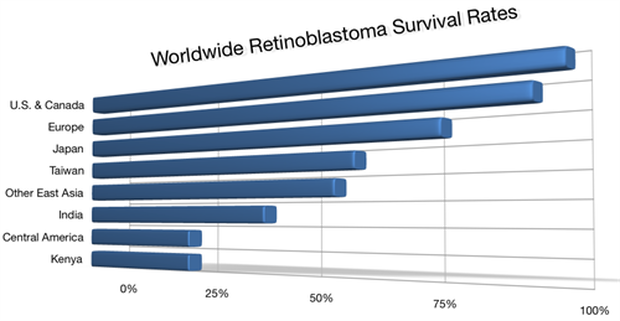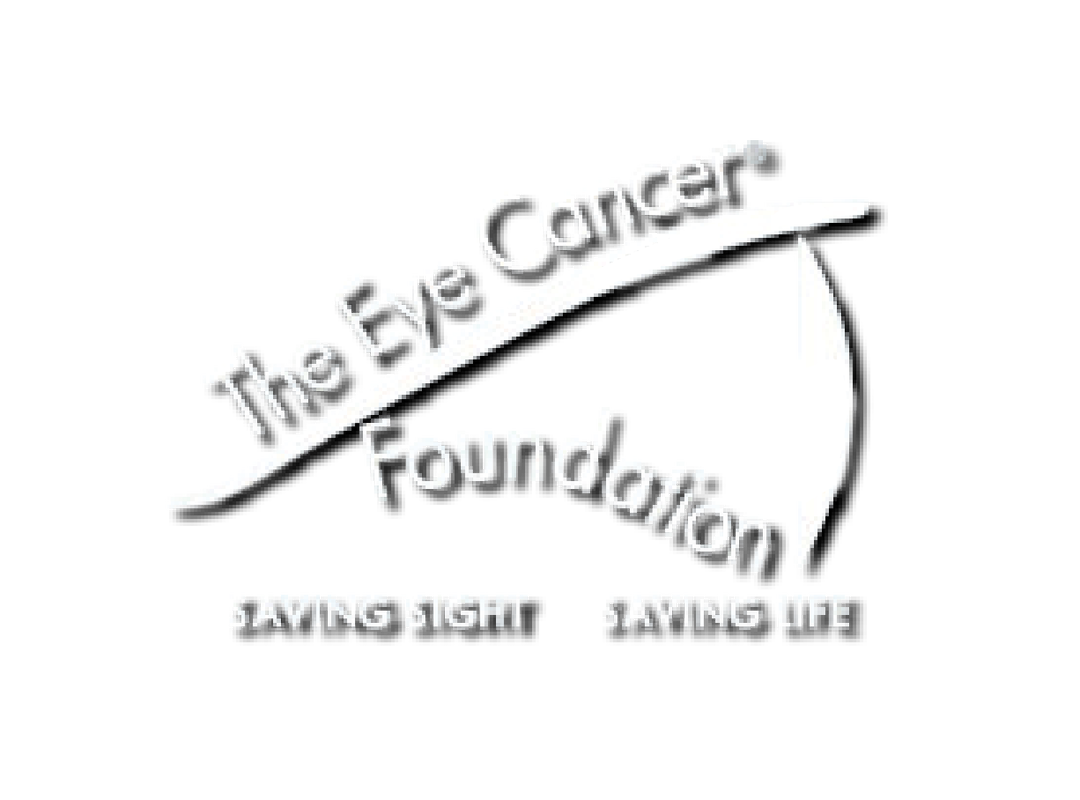The 2020 Campaign: Train 20 Specialists in 20 Countries to Treat Childhood Eye Cancer
The Effects of Retinoblastoma
Retinoblastoma (RB) is the most common eye cancer in children. It typically develops before the age of three. Every year, retinoblastoma afflicts some 10,000 children around the world. In the U.S and developed countries, where there is access to specialized treatment, most patients survive to lead normal lives. However, in developing countries, there may be little to no access to care. Most of these children remain undiagnosed until it is too late, and eventually succumb to metastatic retinoblastoma. "About 40%-70% of children with RB die in Asia and Africa. In China, the mortality of retinoblastoma is about 30%-40% while in Europe, Canada, and the USA, this rate is only 3%-5%" (Luo & Deng, 2013).
Retinoblastoma (RB) is the most common eye cancer in children. It typically develops before the age of three. Every year, retinoblastoma afflicts some 10,000 children around the world. In the U.S and developed countries, where there is access to specialized treatment, most patients survive to lead normal lives. However, in developing countries, there may be little to no access to care. Most of these children remain undiagnosed until it is too late, and eventually succumb to metastatic retinoblastoma. "About 40%-70% of children with RB die in Asia and Africa. In China, the mortality of retinoblastoma is about 30%-40% while in Europe, Canada, and the USA, this rate is only 3%-5%" (Luo & Deng, 2013).
Screening, early diagnosis, and prompt treatment save lives. After treatment, survival of RB is upwards of 95%. However, untreated, the disease is almost guranteed to spread and the patient will succumb to the disease. Here in the U.S., we have routine check-ups, interventions, and easy access to treatment, so metastesis is hardly ever a concern. In contrast, many less developed countries don’t even have a single doctor specializing in eye cancer treatment, and local general ophthalmologists are not familiar with modern eye cancer medicine. With a relatively small investment, we can provide doctors with specialized training in retinoblastoma treatment and strategically place them in underserved regions around the world.
What is the 2020 Campaign?
Recognizing the need for international awareness and training in ocular oncology, ECF chairman Dr. Paul T. Finger organized the 2020 Campaign. The campaign was launched in 2016 to ensure that one day, no child has to suffer from metastatic disease.
At the start of this campaign, the goal was to train 20 eye cancer specialists to work in 20 countries by 2020, providing the world with accesible diagnosis and modern treatment methods. With your help, we have surpassed our goal before 2020, having trained nearly 50 fellows in ocular oncology in 2019. Not only has this campaign already saved hundreds of lives, but the establishment of specialists and specialized treatment centers will save the lives of thousands of eye cancer sufferers in the years to come.
2020 and Beyond
The Eye Cancer Foundation established a partnership with the International Council of Ophthalmology to in order to expand our reach and further support and promote eye cancer fellowship education for doctors from unserved and underserved countries.
But we still need your help!
Through the main goal of the 2020 campaign has been accomplished, we have only just cracked the surface of a long-standing, ever-changing problem. This was only the beginning. Our ability to train doctors and supply them with the equipment they need to properly diagnose and treat retinoblastoma is only limited by the generosity of our donors.
You can become part of the cure with a one-time or recurring donation to The Eye Cancer Foundation. Click HERE to donate today.
The Eye Cancer Foundation established a partnership with the International Council of Ophthalmology to in order to expand our reach and further support and promote eye cancer fellowship education for doctors from unserved and underserved countries.
But we still need your help!
Through the main goal of the 2020 campaign has been accomplished, we have only just cracked the surface of a long-standing, ever-changing problem. This was only the beginning. Our ability to train doctors and supply them with the equipment they need to properly diagnose and treat retinoblastoma is only limited by the generosity of our donors.
You can become part of the cure with a one-time or recurring donation to The Eye Cancer Foundation. Click HERE to donate today.
References:
- Luo, Chang and Ying-Ping Deng. “Retinoblastoma: concerning its initiation and treatment” International journal of ophthalmology vol. 6,3 397-401. 18 Jun. 2013, doi:10.3980/j.issn.2222-3959.2013.03.26
- Houston, Samuel K et al. “Current update on retinoblastoma” International ophthalmology clinics vol. 51,1 (2011): 77-91.
- Naseripour, Masood. “"Retinoblastoma survival disparity": The expanding horizon in developing countries” Saudi journal of ophthalmology : official journal of the Saudi Ophthalmological Society vol. 26,2 (2012): 157-61.
- Jin, Liwen et al. “Retrospective investigation of retinoblastoma in Chinese patients” Oncotarget vol. 8,65 108492-108497. 23 May. 2017, doi:10.18632/oncotarget.18174
- “RETINOBLASTOMA: Union for International Cancer Control 2014 Review of Cancer Medicines on the WHO List of Essential Medicines.” Www.who.int, World Health Organization, 2014, www.who.int/selection_medicines/committees/expert/20/applications/Retinoblastoma.pdf?ua=1.
- Dimaras, Helen, et al. “Retinoblastoma.” www.thelancet.com, The Lancet, 12 Mar. 2012, www.thelancet.com/action/showPdf?pii=S0140-6736%2811%2961137-9.
- Nakata, Kayo, et al. “Childhood Cancer Incidence and Survival in Japan and England: A Population-Based Study (1993-2010).” The Canadian Journal of Chemical Engineering, Wiley-Blackwell, 26 Dec. 2017, onlinelibrary.wiley.com/doi/epdf/10.1111/cas.13457.




